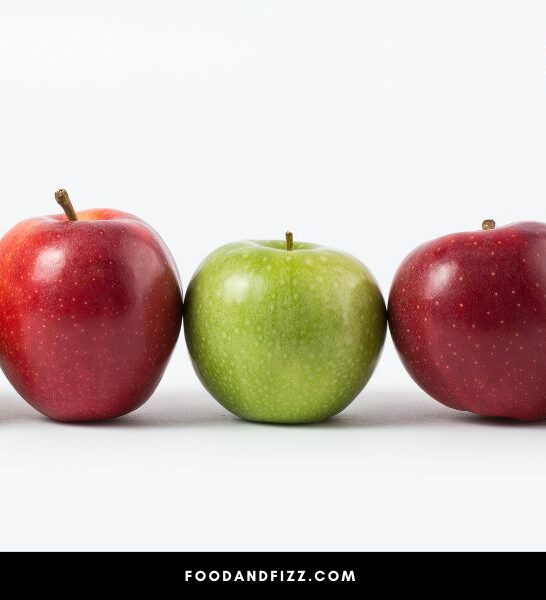Most cooks will agree that there are just some things that are best measured in weight. For example, whole fruits like apples.
While most recipes do specify how many apples are needed to make the dish, it wouldn’t hurt to know important weight measurements in case you want to keep track of your usage and more effectively calculate costs.
There are many apple varieties so, of course, it would be hard to pinpoint an exact figure as to how much one apple weighs, however, there is an average range that we can use.
How Many Ounces In An Apple?
An average apple weighs between 5-8.5 ounces. However, depending on the size and variety, some can weigh significantly more or less than that figure.
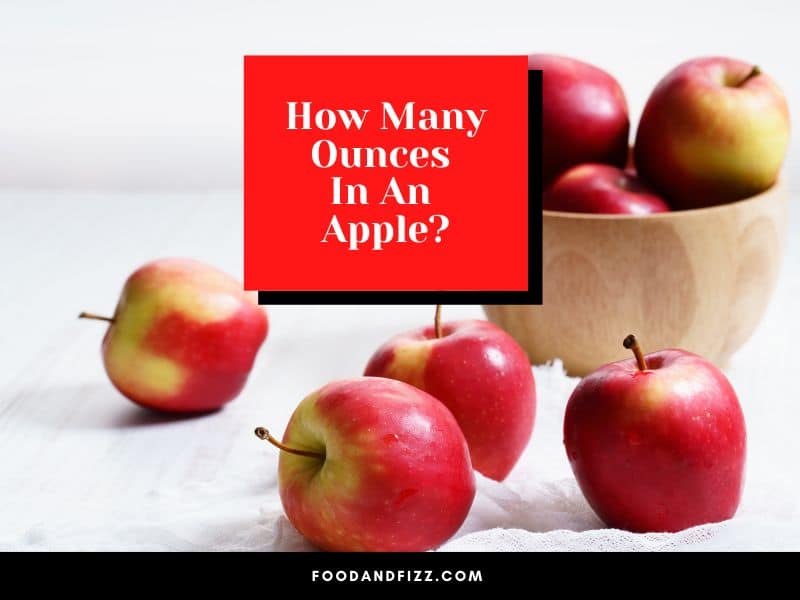
Why Weigh Apples?
It is useful to weigh apples for two reasons.
1. Ease of use in recipes
Since apples come in different varieties and sizes, knowing how much they weigh will make it easier to determine how much is needed in a recipe, and how much we need to add. It helps ensure that recipes will turn out well and helps prevent wastage.
2. Accurate calculation of costs
It is much easier to accurately calculate the costs of ingredients when they are weighed appropriately. It also makes it easier to replicate the recipe in the future, and to double or triple it in case you are making it for a big group of people.
How Many Grams is An Apple?
An average apple weighs anywhere from 150 grams to 250 grams.
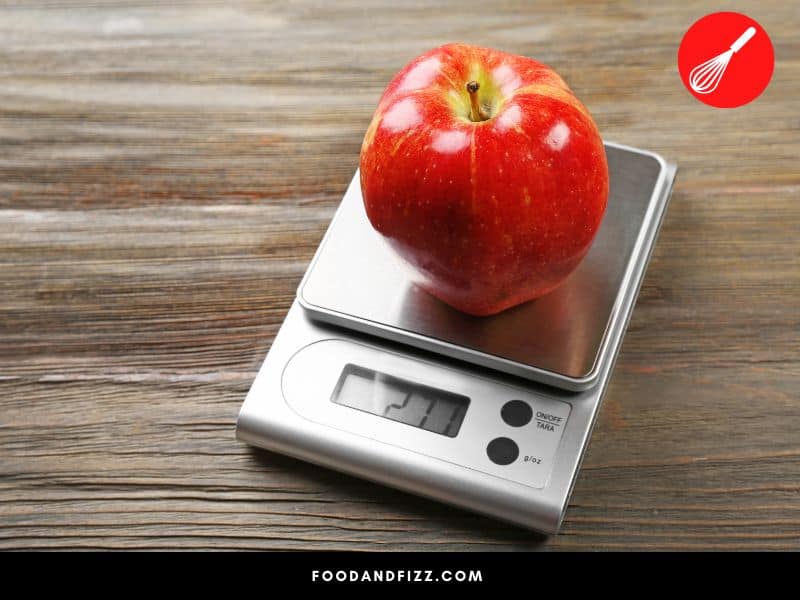
How Much Does An Apple Weigh in Pounds?
An average apple weighs 1/3 pounds to ½ pounds.
What Is One Serving of Apple?
The NLEA or Nutrition Labelling and Education Act allows the FDA to regulate what is printed on food nutrition labels. An NLEA serving size pertains to what is usually consumed by a person in one sitting based on specific guidelines.
An NLEA serving of apples is 242 g or about 8.5 ounces, equivalent to an average-sized apple.
How Many Calories Are In One Serving of Apples?
One NLEA serving of apples or one average apple weighing about 8.5 ounces has 126 calories.
Popular Varieties of Apples
Apples have been around for thousands of years and are some of the healthiest fruits you can eat.
According to the University of Illinois Extension, over 7,500 apple varieties exist in the world and 2,500 of them are grown in the U.S., but only 100 are grown for commercial purposes.
Here are some of the more popular ones, as well as their popular uses.
1. Gala
Gala apples are sweet, crisp, and mild flavored apples that are streaked with a reddish-orange and yellow hue. They are the most popular apple variety in the U.S., and the most widely grown.
They are awesome to eat as is or added to your favorite green salad. They can also be made into apple sauce or apple cider. They are not very ideal for things like apple pie because they can get too soft and mushy.

2. Red Delicious
Red delicious apples have a shiny red exterior and a conical shape. They are wider at the top and become narrow at the bottom. They used to be the most popular apple in the U.S. before other varieties like Gala and Honeycrisp apples pushed them away from the spotlight.
They are likely the first variety of apples that would pop into your head because of their distinct and attractive look, but not everyone is fond of their taste. While it is one of the prettier apples, its skin can taste quite bitter and the flesh can sometimes taste mealy.
They do not hold up well to baking and cooking and work best in uncooked applications like a green salad or fruit salad, as edible garnishes for sandwiches and burgers, and as some Red Delicious bashers would say, as a decoration for your holiday wreaths.
3. Honeycrisp
This millennial apple was born at the University of Minnesota in the 1990s. It was bred with the intention of producing the perfect apple, and it was a resounding success. Honeycrisp apples are honey-sweet with a slight tartness, crisp with a juicy texture, and are very aromatic apples.
They are yellow-green in color with red-orange mottling on their exterior. They are perfect for eating on their own as they are juicy and bursting with flavor, and also hold up to cooking and baking.
4. Fuji
Fuji apples were developed by breeders in Japan in the 1930s, named after the town of Fujisaki where the first seedling was planted. They are the result of a combination of Red Delicious and Rawls Jennet apples.
It remains to be the most popular apple variety in Japan, but it is also quite popular in the U.S. and other countries. They are light red or pinkish in color, have a sweet and subtly tart taste, and have a crisp texture. They have a very long shelf life compared to other apples, lasting up to a year when refrigerated.
They are one of the best apples to snack on, to use in cheeseboards, or to make into apple juice or cider. They may work in some baking applications but since they are juicy apples, they may turn mushy when baked.
5. Granny Smith
Granny Smith apples originated in Australia in the 1860s. Also known as “green apples” or “sour apples”, they are said to be a cross between a European wild apple and a domestic apple.
Their skin is light green in color with a crisp, pale flesh that is tart and acidic. They retain their firm flesh even when heated, which makes them ideal for baking and cooking.
This is my favorite apple to use for my apple pies and apple tarts, as I find that the natural tartness gives a nice, refreshing balance to the usual sweetness of the pie, and makes it lighter and fresher.
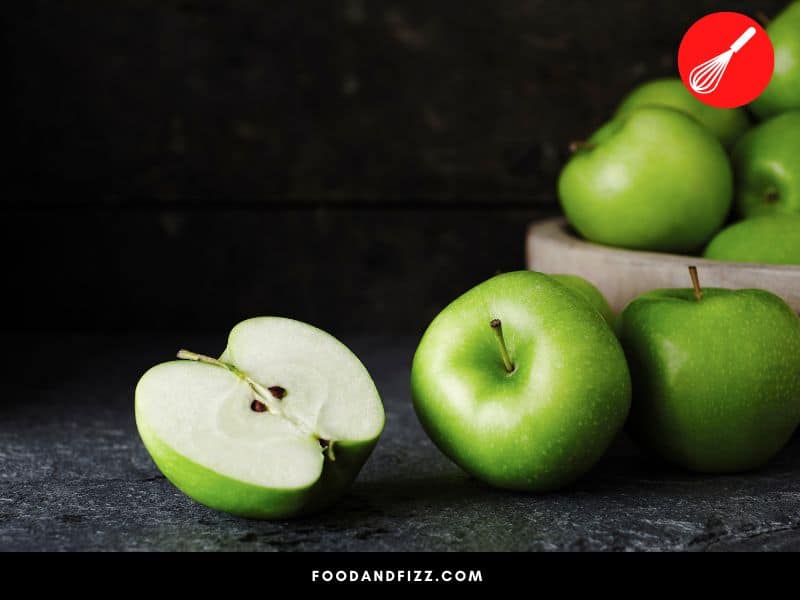
Health Benefits of Apples
Most experts agree that the best way to safeguard ourselves against sickness is to eat a balanced, varied diet that is rich in health-promoting fruits and vegetables.
Apples are incredibly nutritious, and no matter what variety you prefer, is an excellent addition to a health-supportive diet.
Below are some of the amazing health benefits of apples:
- Apples are rich in soluble and insoluble fiber which supports digestion and gut health. Much of this fiber is found on the skin.
- Full of antioxidants that prevent cell damage and prevent the growth of cancer cells. Again, much of this is found on the skin.
- Contains quercetin, a compound found in many plants that studies suggest have anti-inflammatory, antiviral, anticancer, and antidepressant effects.
- Low-calorie food that may help support weight loss
- Lowers the risk of developing heart disease and diabetes
- Controls blood sugar levels and cholesterol levels
- Helps improve memory and alertness
Apples truly are nutritional superstars and that is likely the reason why they say that “an apple a day keeps the doctor away”. While not a cure-all for all kinds of sickness (no one type of food is, to be honest), it is for sure a great addition to our diets, and one that should be part of our diet rotation.
Interesting Apple Facts
Below are some fun, interesting facts about apples.
- One large apple that weighs around 7 oz contains 5 grams of fiber.
- It can take around 4-5 years for new apple trees to produce their very first fruits.
- The variety “Red Delicious” is the cheapest apple and the most widely grown. It also has the most haters.
- To make a 9 inch pie, you need two pounds of apples.
- Roses and apples are part of the same family, including cherries, peaches plums and apricots.
- Apple trees can survive for over 100 years, although on average they live about 30-50 years.
- Most apples grown are still picked by hand.
- An average apple tree can yield fruit that can fill 20 boxes weighing 42 pounds each.
- A peck of apples weighs 10 ½ pounds.
- Apple sizes can range from the size of a cherry to the size of a grapefruit.
- Apples will ripen very fast at room temperature, about 6-10 times faster, compared to if they are kept in the fridge.
- To make a gallon of apple cider, you would need anywhere from 35-40 apples.
- The biggest apple ever picked weighed 3 pounds and 2 ounces.
- Apples do not contain fat, sodium or cholesterol.
- The study of cultivating fruit is called Pomology.
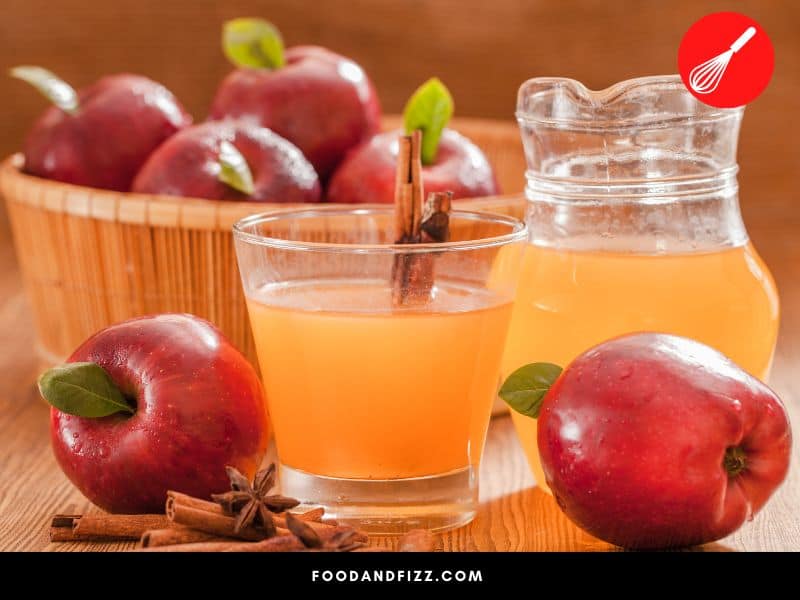
Frequently Asked Questions to How Many Ounces In An Apple?
What is One Cup of Apples in Ounces?
According to the USDA, one cup of sliced apples is 109 grams or 3.84 ounces.
How Many Apples are in a Pound?
There is an average of 3 apples in one pound.
How Many Cups Is One Apple?
One average-sized apple will make about 1- 1/3 cups of cubed apples.
Conclusion to How Many Ounces In An Apple
Apples come in a variety of sizes, but an average-sized one can weigh anywhere from 5-8.5 ounces or 150-250 grams.
Apples also come in various shades of red, yellow and green, and range in taste from sweet to tart, or a distinct combination of both. Depending on the variety, they can be eaten alone, added to salads or baked into delicious desserts and made into delicious and healthy drinks.

